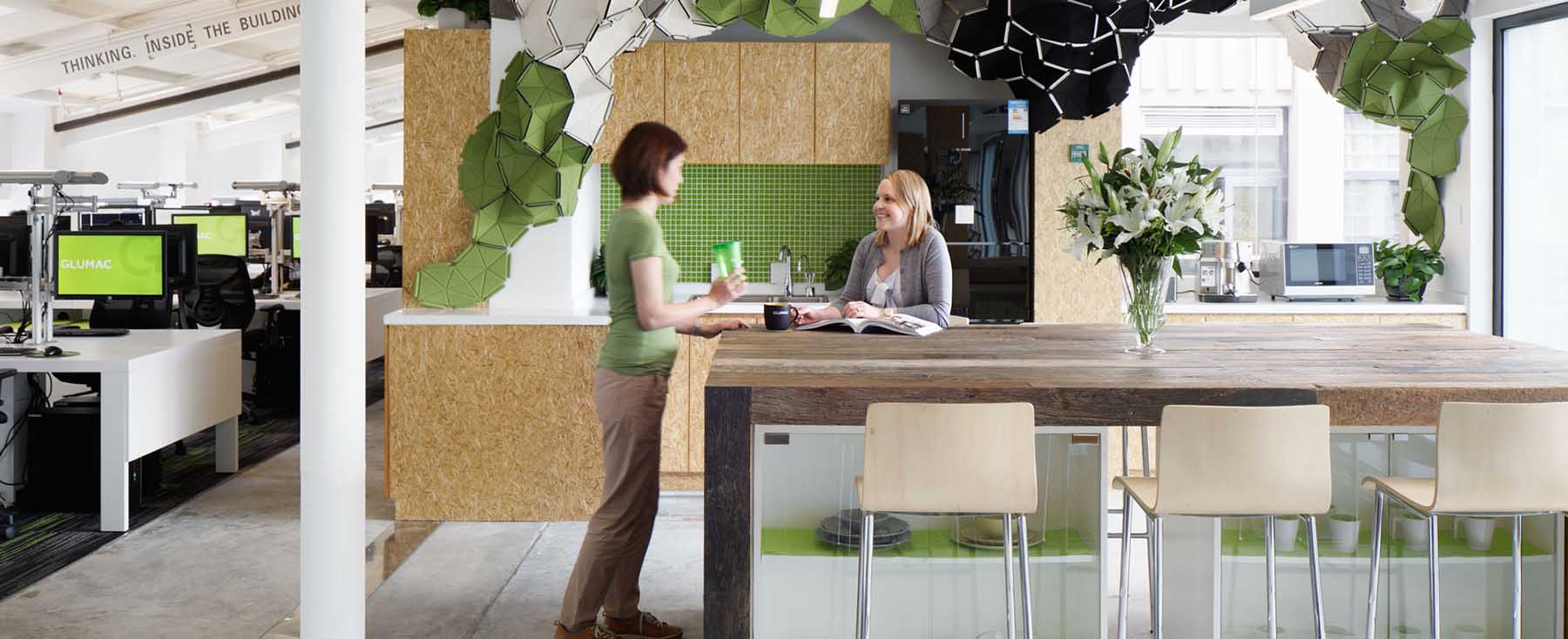Along with much of China, our Shanghai team has already begun returning to its office. It’s a high-performance space with some of the best air quality in the country. But during a pandemic, adjustments need to be made to maintain the health and safety of our staff.
Life is different. The basic ways we navigate our city and our office have changed in a lot of ways – big and small. The ways we get to work, how we eat, how we interact with each other and clients. That’s led to a new normal. Here’s what that new normal looks like, and how we’re keeping each other safe while working toward a sustainable future.
Commutes: Public Transportation
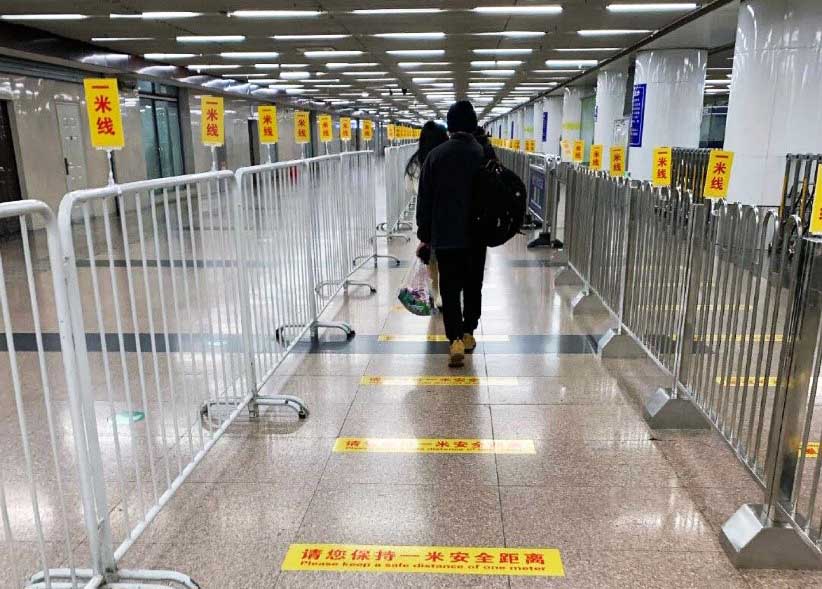
For many in Shanghai, commuting is a mix of public transportation and ride share. While both of these are still active, the experience has changed. The entrance to the subway is now marked off with guidelines for social distancing – following the recommendation from the World Health Organization, though it is slightly less than what is recommended by the United States Centers for Disease Control & Prevention. And riders are scanned an infrared radiation thermometer to test their temperature before entering the train. As fever is one of the COVID-19 virus’s key symptoms, this helps inform people that they may need to seek a COVID-19 test and if necessary begin quarantine and treatment.

Masks are commonplace everywhere, and especially on the train. Some are taking extra precautions beyond what is recommended, including wearing gloves to prevent contact transmission. Rides can be quiet as people maintain social distancing.
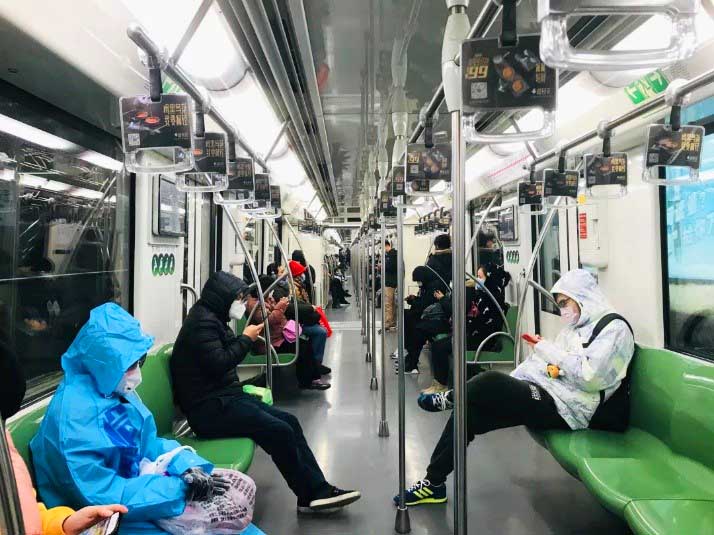
Ride-shares also remain a common way to commute. To provide protection for both driver and rider, most cars have been outfitted with plastic dividers that keep them separate. Masks and gloves are generally necessary here as well, despite having the space to yourself.
To receive Sustainability Matters and articles like this in your inbox, Sign Up Here
Upon reaching our office, security again scan your temperature as well as a QR code on your phone alerts you to whether you have recently been in contact with someone who has tested positive for COVID 19. While this “Safety Code” is an effective way to contact trace, it is an extreme measure that has brought up questions regarding individual privacy and civil liberties – with lingering concerns over what else can be done with the collected data. Green means you are healthy and cleared to enter the space. Yellow and red mean you must enter a 7-14 day quarantine. The massive adoption of this method allows authorities to trace movements of individuals and gain a quicker understanding of where that patient as been and identify others with whom they have been in contact with.
Entering the Office
Under our own office policy, whoever travels back from other Provinces throughout the country must self-quarantine for 14 days before they can return to our space. Our remote work capabilities have been well established at this point, allowing this extra protective safety measure for our staff.
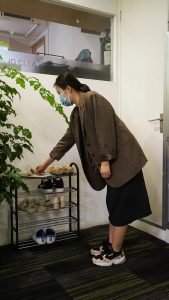
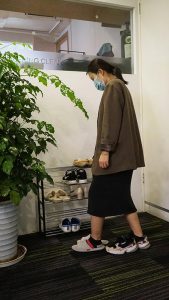
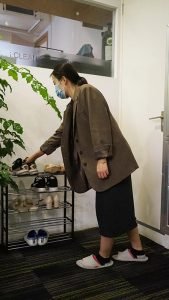
We’ve instituted a Shoe Shelf. Our staff keep a pair of shoes in the office and change when they arrive. This is a common practice in a lot of cities where walking, biking, and public transit are primary methods of commuting. What was once done out of comfort is now an added health and wellness measure. Staff also change from street to work clothes once they enter the office.

Hand Sanitizer and disinfectant are kept at the reception desk for employees to wash hands and disinfect before they come into the workplace. Advanced cleaning measures are necessary for surfaces as well. A balance between the types of cleaners we use and their true effectiveness needs to be struck – we don’t want to have to lean on toxic cleaners with terrible environmental outcomes like bleach to maintain baseline health in our work spaces.
The office manager measures the temperature for our employees every day before they come into the workplace using a handheld FLIR tempscreen digital thermometer. This allows the office manager to maintain a safe distance, and while they have already been scanned prior to arriving into the building, this is an added health protocol that deepens a sense of safety and wellness for staff. New masks are distributed to our staff each day as well.
Contact-free delivery is the new normal. We have placed a shelf at front of door for the courier to place packages on, with instructions to call the recipient to pick up the delivery once they’ve left. Lunch is delivered this way as well, though, most staff are now bringing food from home – and seeing dramatic improvements in their personal cooking skills!

We have also installed three air purifiers throughout the space, they are kept on all day to reduce particles which may carry viruses. However, one of the best ways to maintain clean air levels in a space is to keep it well ventilated. This is something we’ve been working with clients on for years, but perhaps now more than ever the benefits are proving crucial. We turn off the return air and operate the AHU on Dedicated Outside Air mode to avoid cross contamination. This is one of our primary pieces of advice to clients. Completely shutting off return air is key, especially in high rise office towers where one AHU is serving for multiple tenant spaces.
The new normal looks a lot different. But these changes underscore the importance of sustainable and wellness-focused building design. As one of the most high-performance spaces in China, our space has already been equipped with or is easily retrofitted to integrate some of these helpful operational and behavioral changes to keep our staff safe.

